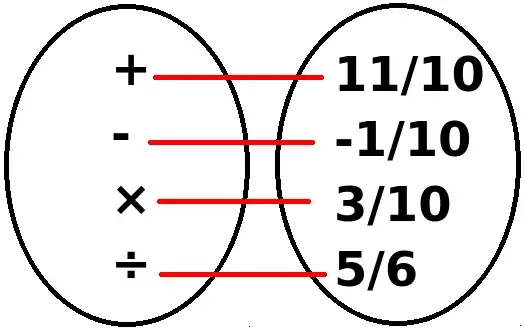I was thinking today.
I have this function, with this rule
$f:ℝ↦ℝ$
$x↦x+2$
this is
$f(x)=x+2 |x∈ℝ$
It follows elementarily that
$f(2)=2+2=4$
$f(3)=3+2=5$
and so on.
But what if I had a function with this rule
$s:\{+,-,×,÷\}↦ℝ$
$*↦\frac{1}{2}*\frac{3}{5}$
this is
$s(*)=\frac{1}{2}*\frac{3}{5} | *∈\{+,-,×,÷\} $
so
$s(+)=\frac{1}{2}+\frac{3}{5}=\frac{11}{10}$
$s(-)=\frac{1}{2}-\frac{3}{5}=\frac{-1}{10}$
$s(×)=\frac{1}{2}×\frac{3}{5}=\frac{3}{10}$
$s(÷)=\frac{1}{2}÷\frac{3}{5}=\frac{5}{6}$
This would be a function since
And it's also biyective, so it has an inverse,
and I could do something like this:
$s^{-1}(\frac{5}{6})=÷$
Now, Real analysis is the branch of math that deals with function whose domain is ℝ. Complex analysis is the branch of math that deals with function whose domain is ℂ.
So my question is, what is the branch of math that deals with functions whose domains are operators?
Thanks in advance.
